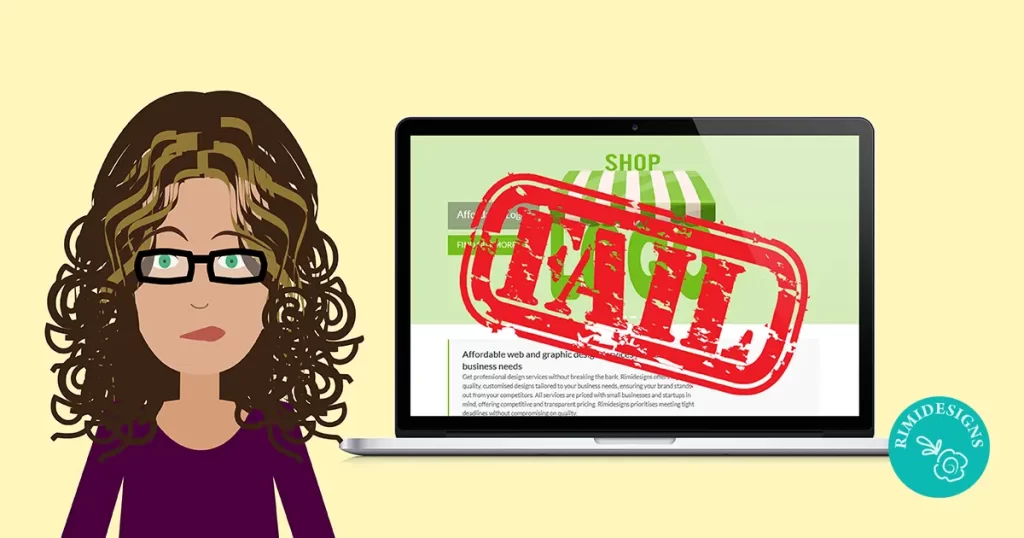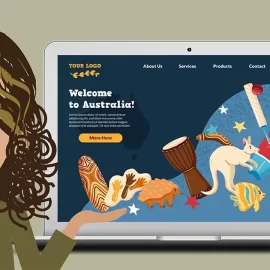
The Negative Impact When Website Design Fails
Increased visibility is one of the major reasons why it is important to have a good business website. The web has a further reach than any form of advertising tool because it can be viewed globally. For an e-commerce site, a website that is user friendly and easy to navigate tends to encourage repeat visits among customers.
Your business website provides online presence but if the website design fails it can also have a negative impact on your potential customers. 75% of people base their initial judgment of a business on the way they perceive the website.
Reasons for the failure of many websites
Website design and usability influences buying decisions. However, if your business website has been poorly designed, customers may not be able to make a purchase or find the information they desire.
There is no dearth for poorly designed websites on the net and it is a pity since businesses usually invest a good amount to gain an online presence. An e-commerce website tends to lose thousands in potential purchases simply because the website design is not up to standards.
Listed below are the most common errors committed why website designs fail with their objective.
Fail #1: The website design has overlooked mobile users
Mobile web browsers account for more than 50% of all web traffic. If you overlook the importance of mobile browsers, you are saying goodbye to approximately 80% of your potential visitors.
If mobile users cannot access your website on their devices, they will likely continue with the search but on another website. At the very worse, this poor experience will elicit a conscious reaction to avoid your brand in the future.
There are 3 ways to fix this oversight:
- You can build a mobile version of the website but this means you have two websites to maintain.
- You can use a mobile app that will provide easy access to mobile visitors but this is a costly investment.
- Opt for a responsive website that will make you accessible no matter what device the consumer is using. This can be considered as the best option seeing that only one version of the website has to be developed and maintained.
Fail #2: It’s a challenge to navigate the website
Not all people have the aptitude of finding their way on your website. When potential customers meet difficulties in navigating your website, the possibility that they will never return increases which mean lost sales.
Why should a customer insist on using your website when there are other websites that provide great usability? Not all consumers have the patience and time to look for the information they desire. After being frustrated, they will give up looking and will eventually click on another more accessible website for the item they plan to buy.
There are many technologies available, aside from HTML and CSS, that will guide users with their navigation.
Fail #3: The website takes forever to load
Users won’t wait patiently for a website to load. Why would they do so, when there are a lot of competitive websites on the web?
In your attempt to make the website look extremely attractive to visitors, you made use of large images that have not been resized to proper versions. A lot of other little things may have added up – like poor coding, large files and server configurations. Fixing the problem is not actually a challenge but the developer must look for the source of the issue and proceed from there.
There are tools like Pingdom Website Speed Test that will show the reasons for the bottleneck. Once the problem has been identified, the web developer needs to check whether it is the codes or optimisation that is the source of the problem.
It is also likely that the server that the website is running on does not provide enough bandwidth, which makes the connection quite poor.
The fact is, when website design fails, it is far more serious than having an ugly-looking website. It is easy enough to improve aesthetics since there are templates available.
Redesigning the website means you have to remove certain elements that detracts from its value and the message you are trying to convey.
First to go would be the complex animations, as they are causing your website to load at a slower rate.
Give your visitors reason to visit your website by providing them with informative content.
Make use of the experience of your current customers and how they were transformed from being a visitor to a valuable customer.
Map out your strategies from customer feedbacks and comments. Give your potential customers what they want and help them with their search by making the website more accessible.
SOURCE: WebsiteTemplates.org
Need a professional looking website?



